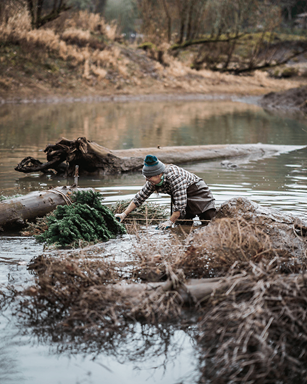
Sadly, there are now only 73 Southern Resident Orcas remaining making them an endangered species, and they are starving. Thankfully, new conservation efforts are drawing the connection between restoring the forests of the Pacific Northwest and saving the Orcas. By repairing critical watersheds and planting lots of trees, conservationists hope to bring back the Orcas from the brink of extinction.
What connects trees and whales? It all comes down to what they eat! One of the biggest threats to the Orca is an ever-decreasing supply of salmon. Human interference such as through fish hatcheries, dams, dykes and levees, logging, overfishing, pollution, and highway construction are all impeding the salmon’s ability to spawn and survive. But there is a way to improve this…by planting trees.
Tree planting and restoring riparian zones (the areas where land meets a river or stream) across the Pacific Northwest is a simple and effective solution for protecting salmon stocks and ensuring the Orca can rely on Chinook salmon for years to come. And the benefits of reforestation here go farther:

• Improves water quality as the trees filter out toxins
• Protection against erosion as trees spread their roots to solidify river banks
• Keeping river water clear of excessive sediment needed for salmon to spawn
• Provides critical shade over salmon spawning grounds
• Slowing down river flow making it easier for salmon to lay eggs
UCA proudly co-sponsored the new Orca Project headed up by One Tree Planted, which in its first phase planted 848,938 trees by over 4,000 volunteers! With the great success of this first project, more restoration projects for Chinook Salmon and the Orcas are moving forward as well.
As a UCA member, you are making it possible to help Children, Animals, Reforestation and the Elderly through our C.A.R.E. Projects. Thank you for being a part of moving caring forward.
